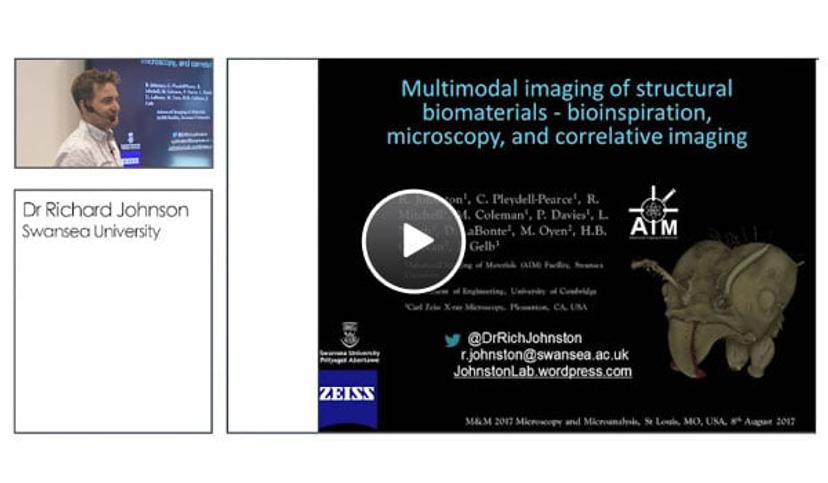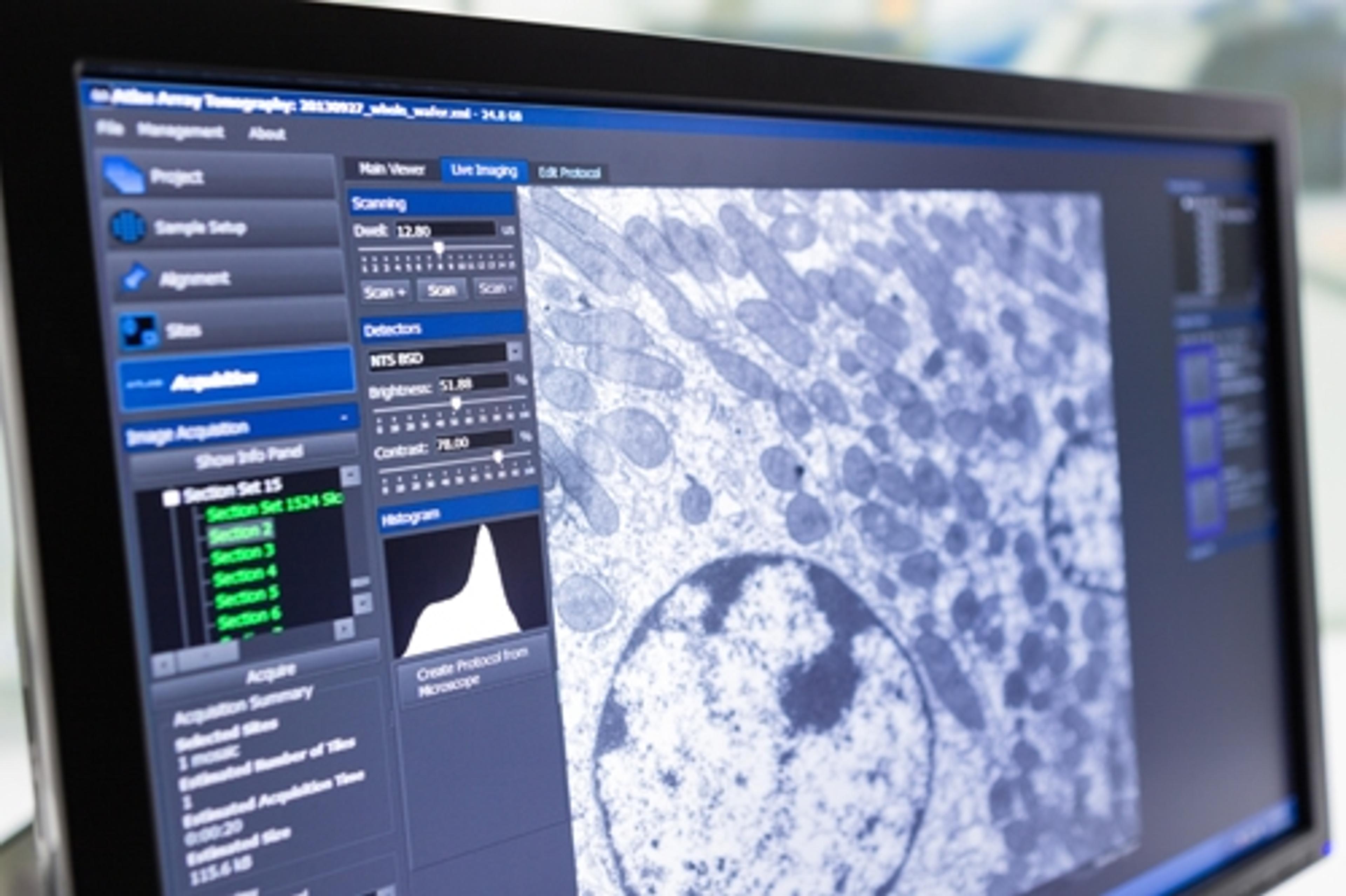Use of Correlative Imaging to Bridge the Materials Gap Between Scientific Disciplines
Find out how Swansea University is developing correlative imaging workflows for multiple applications
14 Feb 2018
Dr. Richard Johnston is an associate professor in the Material Research Centre, Swansea University, Wales, UK. Johnston leads a research group focused on imaging, with a particular emphasis on X-ray microscopy, and is the co-director of the Advanced Imaging of Materials (AIM) center. As an expert in the field of correlative imaging, and an advocate of collaboration between diverse scientific fields, Johnston’s work is bridging the gap between disciplines. In this exclusive SelectScience® interview, Associate Editor, Sonia Nicholas, finds out more.
SN: Please give us a brief overview of your job and department
My role as a group leader and associate professor involves working with the team to improve our understanding of the relationship between structure and properties of certain materials. These might be manufactured and engineered materials, or they might be biological materials.
As a team, we are specialists in X-ray microscopy, our Advanced Imaging of Materials (AIM) facility also has multiple instruments for advanced light microscopy, electron microscopy and other characterization techniques such as X-ray diffraction, X-ray photoelectric microscopy and nano-mechanical characterization.
We work widely with a lot of different collaborators in very different fields, which is an interesting aspect of our job. We particularly enjoy working with people in different areas of research and combining our areas of expertise to address new challenges and create new research questions.

SN: What is meant by the term correlative microscopy and how do you use this in your work?
When we talk about correlative imaging or microscopy, we are talking about using different imaging techniques on the same sample. Spatially, we are looking at the same area or volume between different microscopy or characterization techniques. This can span from a simple low-resolution image, including techniques like macro photography, photogrammetry, to looking at the same area with our ZEISS electron microscopes. Because we have a Zeiss Xradia Versa X-ray microscope (also known as X-ray microtomography) within our facility, we can also implement a multi-scale workflow starting with whole objects; we can scan materials, imaging them in 3D at high resolution, and use that to identify morphology, features and structures of interest within that 3D data set.
Say for example that we find something of interest beneath the surface using X-ray tomography. We can then take that same sample and image it within the scanning electron microscope (SEM) while using focused-ion beam material removal techniques — so sectioning of the sample in between X-ray and electron microscopy to enable us to reach the sub-surface feature of interest and image it at even higher resolution. X-ray imaging will give you shapes and morphology internally but then we might identify something which has the different chemistry based on X-ray attenuation. When we machine down to that inside the electron microscope we can get to the elemental compositional data. We might also be able to get crystallographic orientation data using an electron back-scatter diffraction (EBSD) technique.
We bring together these multiple data sets, at multiple length scales, and multiple modalities, to help us understand the hierarchal structure of the material. We then try to relate this information to the material’s behavior and properties, its function and its processing.
SN: Which ZEISS technologies do you use, and why?
We have two ZEISS electron microscopes: ZEISS Crossbeam and ZEISS EVO. ZEISS Crossbeam allows us, using a FIB (focused ion beam), to progressively remove layers at a higher resolution than our ZEISS Xradia 520 Versa X-ray microscope and produce destructive 3D volumetric data sets of the feature of interest that has been identified in our initial scan.
ZEISS Crossbeam links in very well to our ZEISS Xradia 520 Versa; we can take a sample from one straight into another to try to align our data sets to perform further imaging. We also have numerous ZEISS optical microscopes.

SN: How do you work with ZEISS to achieve your research goals?
We work very closely with ZEISS on a number of projects. We have a particular focus on investigating correlative imaging workflows for different applications. We apply characterization to a few, very different materials, working in close partnership with ZEISS to develop a workflow that spans length scales and modalities. The approach is very new, and not straightforward, so our partnership is mutually beneficial and makes a lot of sense for both of us.
Our partnership develops all the time. Often we’ll undertake a new area of research which would benefit from correlative imaging, so we’ll discuss that with ZEISS before we start. We have multiple projects across ZEISS UK, ZEISS US and ZEISS Germany.
SN: What is the future of your research?
The workflows that we are developing with ZEISS are new and challenging, I think we’ll continue to develop the process and methodologies between all of these instruments as we move forwards. Over the next few years this is one aspect that will continue to develop and become easier, not just for us but for other people using imaging technologies too. Our intention is to be publishing on those workflows and to create methodologies that people can use themselves, while also discovering new things about materials.
We are also working with ZEISS on large data sets and different formats, trying to integrate them and make sense of how they are inter-related. I personally am really interested in applications, so I’ll continue to do what I’ve been doing across disciplines but using more and more advanced tools. The equipment we’ve got from ZEISS allows us to approach other researchers in very different disciplines to try to bridge the gap in those fuzzy spaces between scientific disciplines which have huge potential. Our characterization capability allows us to do something new, applying these techniques to diverse fields.


